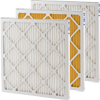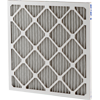1" Furnace Filters
| 1" Air Conditioner Filters | ||
|---|---|---|

|

|
|
Filter Options |
Pleated Filters |
Odor Eliminator |
MERV Rating |
8, 11, or 13 |
10 |
Filter Life |
3 months |
3 months |
